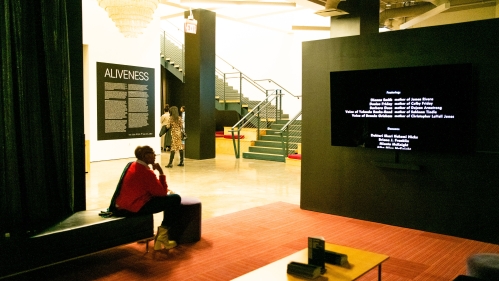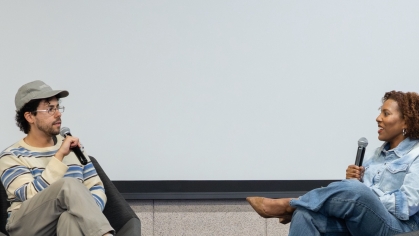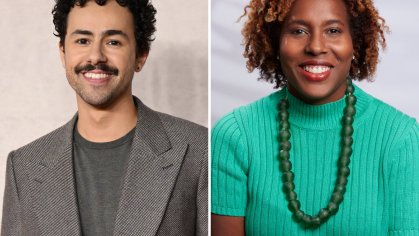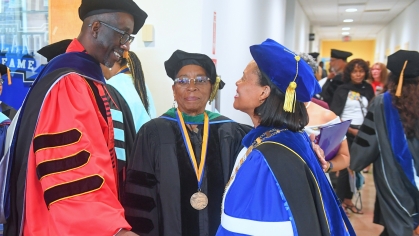At a time when climate disasters and fatal violence, especially against people of color, are pervading the news cycle, Express Newark celebrated the theme of “Aliveness” last week with the opening of three new exhibitions.
Salamishah Tillet, executive director of Express Newark, described the theme, and the work on display, as a counterpoint to narratives that focus on “Black death,’’ fracture, and apathy. The work of “Aliveness” explores the power of collaboration and the relationship between art, racial freedom and environmental justice, she said.
An exhibition by artist Willie Cole, a Newark native, features two large chandelier-like sculptures made of more than 6,000 plastic water bottles, a commentary on Newark’s water crisis, which occurred after lead was found in the municipal drinking supply in 2016, and the harmful environmental effects of disposable plastic bottles. The sculptures, titled "Spirit Catcher" and "Lumen-Less Lantern," ’ were created in collaboration with Newark residents and RU-N students.
Also part of the “Aliveness” launch were films and video installations curated by Farrah Rahaman called “Things We Do in the Dark: Cinematic Experiments in Kinship.’’ The exhibition features more than twenty video-based collaborations by Black and Indigenous artists, located on all three floors of Express Newark, exploring racial solidarity, Black radical protest, and communal healing. Some were created by first-time media makers.
“They’re about the process of coming together in a shared place of desire and emphasizing relationships in order to create work,’’ said Rahaman, who is curator-in-residence at Express Newark. “You can never make a film on your own. There are so many different layers and energies that went into this project. Film making can be an example of how how we want to build a world, and build infrastructures, of care and mutual support.’’
The third exhibition of “Aliveness,’’ titled “Perceptual Engineering,’’ was curated by Colleen Gutwein O’Neal, an adjunct professor of photography, studio art, and contemporary art, who is co-teaching a class with Cole. It features the work of design students and regional artists, who transformed objects that had outlived their usefulness–such as lamps, wooden pallets, and musical instruments–into abstract sculptures.
The concept came from a prompt given by Cole, who explained his inspiration, both for the exhibition and his own work, at the event.
The exhibition’s title was drawn from a book by Wilson Bryant Key, who wrote about subliminal messages in advertising. “Perceptual engineering” was how he described TV commercials, said Cole.
It could also apply to his Cole’s artistic intentions.
“I want to change the way you see things,’’ he said. “I’d like to get you to the point where you can’t believe your eyes. I intend to make things that you see at first as something other than what they are but I’d like for you to see them as what they were again.’’
At the launch event, Tilllet encapsulated the mission of Express Newark, a socially engaged center for art and design that’s supported by Rutgers-Newark. One goal of the center has been to collaborate with residents and grassroots organizations, a tradition Tillet attributed, in part, to the legacy of late Black Arts Movement poet and playwright Amiri Baraka, who founded the community theater Spirit House, and his family, which includes Newark Mayor Ras Baraka, Amiri’s son.
“It was really important for us to maintain this commitment to art and activism…to be living in Newark and to be inventors,’’ Tillet said at the launch event. “ I hope that’s apparent in the work we’re doing and also in the photos and images.’’
Programming for “Aliveness,’’ which was inspired by scholar Kevin Quashie’s recent book, “Black Aliveness, or a Poetics of Being’’ will be held throughout the year.



